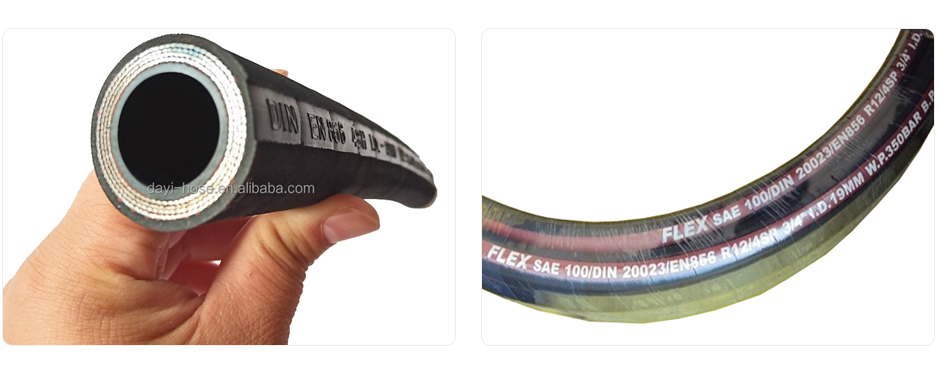335345435
Oct . 18, 2024 16:12 Back to list
Hydraulic Hose Coupling Manufacturing and Supply Chain Solutions for Industrial Applications
Understanding Hydraulic Hose Couplings The Backbone of Fluid Transfer Systems
Hydraulic hose couplings play a crucial role in the efficiency and reliability of hydraulic systems across various industries. As essential components connecting hoses to pumps, valves, and other equipment, these couplings ensure a secure and leak-free transfer of hydraulic fluids. This article delves into the significance of hydraulic hose couplings, their types, manufacturing processes, and considerations for choosing the right coupling for specific applications.
The Importance of Hydraulic Hose Couplings
Hydraulic systems are prevalent in construction, agriculture, manufacturing, and various other sectors where fluid power is essential. The primary purpose of hydraulic hose couplings is to connect different lengths of hoses securely, allowing for the seamless transfer of hydraulic fluids that provide power to machinery. A well-constructed coupling not only guarantees operational efficiency but also enhances the safety of the entire system.
Leaks in hydraulic systems can lead to significant downtime and costly repairs, while also posing safety hazards. Thus, choosing high-quality couplings is paramount to ensure that they can withstand high pressures and prevent leaks. Additionally, couplings must be able to handle different types of fluids, temperatures, and environmental conditions, making their quality and construction critical.
Types of Hydraulic Hose Couplings
There are various types of hydraulic hose couplings, each designed for specific applications and hose types. Some common types include
1. Permanent Couplings These couplings are crimped onto the hose using a specialized machine, creating a mechanical bond that is incredibly secure. They are usually used in high-pressure applications.
2. Reusable Couplings Designed for easier assembly and disassembly, these couplings can be reused multiple times. They are suitable for temporary setups or systems requiring regular maintenance.
3. Push-on Couplings These couplings feature a simple design where hoses can be pushed onto the coupling without needing special tools. They are mainly used in low-pressure applications.
4. Flanged Couplings These are often used in larger systems, connecting hoses to pumps or valves via flanges. They provide a robust connection, particularly in high-flow systems.
hydraulic hose coupling factory

5. Threaded Couplings With various thread types available, these couplings offer secure connections between pipes and hoses. They are often used in environments requiring tight seals and high-pressure applications.
Manufacturing Process of Hydraulic Hose Couplings
The manufacturing process of hydraulic hose couplings involves several key steps to ensure high-quality output. It begins with selecting appropriate materials, often steel or aluminum, known for their strength and resistance to corrosion. The raw materials are then cut and shaped to precise specifications.
Next, the couplings undergo a forming process, where they are molded into the desired shapes. This may include machining, stamping, or forging depending on the coupling type and manufacturing capabilities. Heat treatment is also commonly applied to enhance the strength of the couplings.
Final steps typically involve finishing processes such as surface treatment to prevent corrosion, quality checks to ensure dimensional accuracy, and functional testing to guarantee leak-free performance under pressure.
Choosing the Right Hydraulic Hose Coupling
Selecting the correct hydraulic hose coupling requires careful consideration of several factors. First, it is essential to understand the specific application and its requirements. This includes assessing the fluid type, the operating temperature range, and the pressure ratings expected in the system.
Additionally, compatibility with existing hoses and fittings ensures a seamless installation. Consulting with manufacturers or experts in the field can provide valuable insights into which couplings are best suited for specific jobs.
Conclusion
In conclusion, hydraulic hose couplings are integral components of fluid transfer systems essential for the efficient operation of hydraulic machinery. By understanding the various types, the manufacturing processes involved, and the criteria for selection, companies can optimize their hydraulic systems for performance and safety. Investing in high-quality couplings not only enhances system reliability but also contributes to the overall success of industrial operations. As industries continue to evolve, the demand for innovative and efficient hydraulic solutions will only increase, making the role of hydraulic hose couplings ever more significant.
-
SAE 100 R17 Black Smooth Cover Hydraulic Hose
NewsMar.07,2025
-
SAE 100 R17 Black Smooth Cover Hydraulic Hose
NewsMar.07,2025
-
SAE 100 R17 Black Smooth Cover Hydraulic Hose
NewsMar.07,2025
-
SAE 100 R17 Black Smooth Cover Hydraulic Hose
NewsMar.07,2025
-
SAE 100 R17 Black Smooth Cover Hydraulic Hose
NewsMar.07,2025
-
steel wire braided hydraulic hose
NewsMar.07,2025



